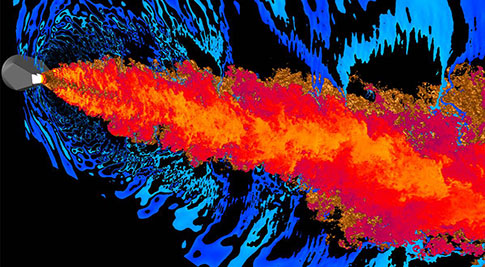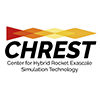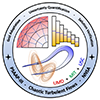The ASC Predictive Science Academic Alliance Program (PSAAP) centers focus on the emerging field of predictive science—the application of verified and validated computational simulations to predict the behavior of complex systems where routine experiments are not feasible. The centers focus on unclassified applications of interest to the National Nuclear Security Administration (NNSA) and its three national laboratories: LLNL, LANL, and SNL. The PSAAP centers develop not only the science and engineering models and software for their large-scale simulations but also pursue advanced computer science developments needed to enable such sophisticated simulations on the next generation of computing platforms. They are also integrating state-of-the-art practices in verification and validation (V&V) and uncertainty quantification (UQ) into their integrated simulation plans so that precise statements can be made about the degree of confidence they have in their simulation-based predictions.
Recognizing the need for a healthy pipeline of top graduate students in science and technology fields, which is crucial to the success of ASC, two complementary graduate fellowship programs, both administered by the Krell Institute, are supported.
PSAAP III Centers
Multidisciplinary Simulation Centers
|
|
|
|
|
|
|
Exascale Predictive Simulation of Inductively Coupled Plasma Torches |
|
|
Integrated Simulations using Exascale Multiphysics Ensembles |
Single-Discipline Centers
|
|
|
|
Center for the Exascale Simulation of Material Interfaces in Extreme Environments |
Focused Investigatory Centers
|
|
|
|
Center for Understandable, Performant Exascale Communication |
|
|
|
Contacts
Ana Kupresanin, Lawrence Livermore National Laboratory (kupresanin1 [at] llnl.gov (kupresanin1[at]llnl[dot]gov))
Fernando Grinstein, Los Alamos National Laboratory (fgrinstein [at] lanl.gov (fgrinstein[at]lanl[dot]gov))
John Feddema, Sandia National Laboratories (jtfedde [at] sandia.gov (jtfedde[at]sandia[dot]gov))
Archive
Refer to the PSAAP site archvies for historical information.














